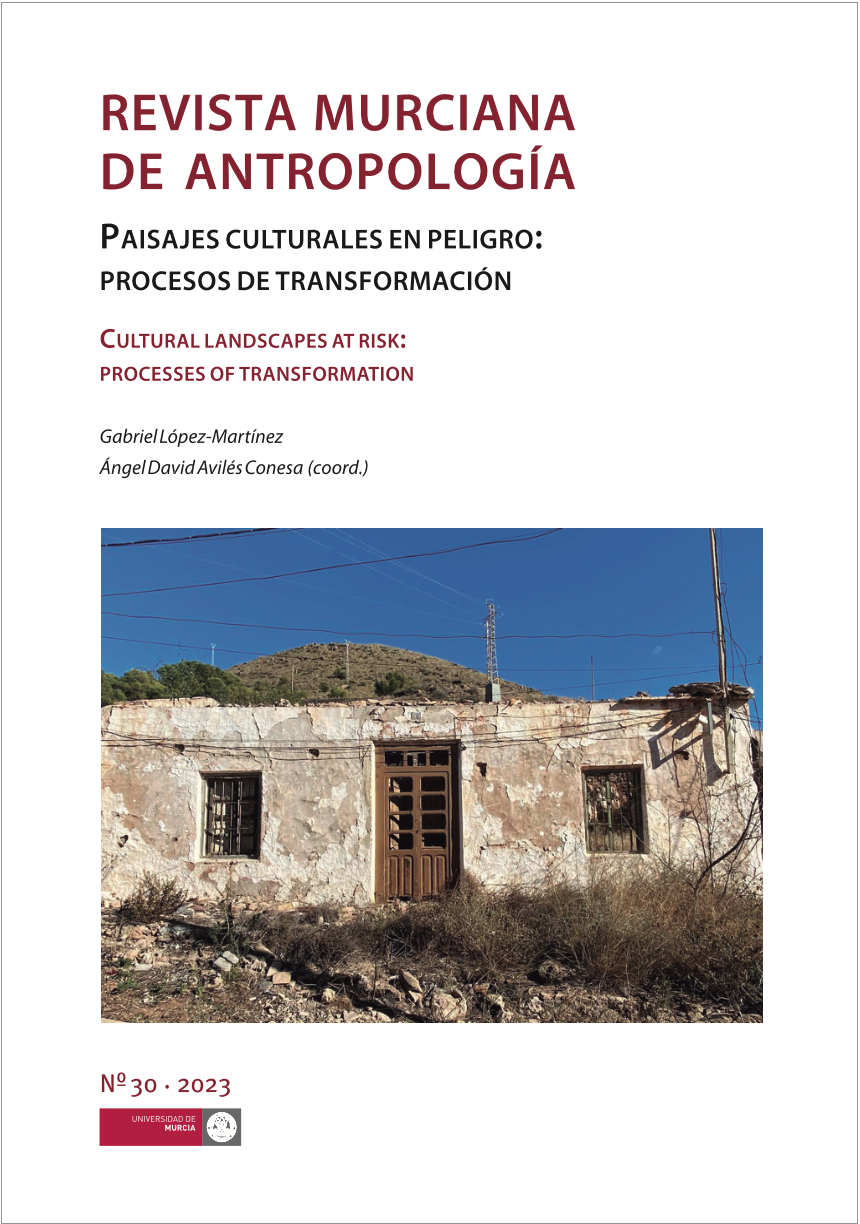“Nuevas naturalezas” en paisajes postindustriales: Estrategias visuales para reflexionar sobre los modos de producción extractivistas en la política y en la vida cotidiana
Resumen
El artículo está dedicado a las transformaciones del paisaje desde el extractivismo a nuevos espacios naturales, tomando la región del Ruhr como ejemplo. En el marco de un enfoque etnográfico, se investigaron los fotógrafos regionales de Instagram y sus imágenes publicadas, a través de las cuales tematizan y reflexionan sobre el cambio estructural en la región del Ruhr. En este estudio, las imágenes de Instagram se entienden como prácticas mediáticas insertas en la vida cotidiana. Para incluir su contexto de surgimiento, se examinan utilizando un enfoque etnográfico digital combinado con encuestas fotográficas, entrevistas y análisis de documentos y imágenes. De este modo, el análisis de la producción de imágenes cotidianas en la región muestra cómo la comprensión de la naturaleza como espacio de ocio y escenario paisajístico encantado y romántico se manifiesta como nuevo recurso económico regional.
Descargas
-
Resumen406
-
pdf217
-
pdf 217
Citas
Althusser, L. (1969). Ideologie und ideologische Staatsapparate. Anmerkungen für eine Untersuchung. En L. Althusser (ed.), Ideologie und ideologische Staatsapparate: Aufsätze zur marxistischen Theorie, 108-168. Hamburg: VSA.
Denning, M. (2007). Representing Global Labour. Social Text, 25/3, 125-145.
Dooling, S. (2009). Ecological gentrification: A research agenda exploring justice in the city. International Journal of Urban and Regional Research, 33/3, 621-639.
Ehses, B. (2010). Industrienatur: wilde Schönheit, stille Schlote. En Regionalverband Ruhr (ed.), Unter freiem Himmel. Emscher Landschaftspark, 162-179. Basel: Birkhäuser.
Färber, A. (2019). How does ANT help us to rethink the city and its promises? En A. Blok, I. Farías & C. Roberts (eds.), The Routledge Companion to Actor-Network Theory, 264-272. London: Routledge.
Fischer, L. (2012). Landschaft – überall und nirgends? En S. Krebs & M. Seifert (eds.), Landschaft quer denken. Theorien – Bilder – Formationen, 23-36. Leipzig: Leipziger Universitätsverlag.
Gerndt, H. (2001). Naturmythen. Traditionales Naturverständnis und mod- ernes Umweltbewußtsein. En R. W. Brednich, A. Schneider & U. Werner (eds.), Natur - Kultur. Volkskundliche Perspektiven auf Mensch und Umwelt. 32. Kongreß der Deutschen Gesellschaft für Volkskunde in Halle vom 27.9. bis 1.10.1999, 57-75. Münster: Waxmann.
Hagerman, C. (2007). Shaping neighbourhoods and nature: Urban political ecologies of urban waterfront transformations in Portland, Oregon. Cities, 24, 285-297.
Hall, S. (2016): Cultural Studies 1983. A theoretical history. Durham and London: Duke University Press.
Haraway, D. J. (2016). Staying with the Trouble. Durham: Duke University Press.
Huszka, V. (2021). Zwischen Innen und Aussen. Der Regionenvergleich als alltagsweltliche Skalierungspraxis. Hamburger Journal für Kulturanthropologie (HJK), 13, 271-279.
Jansson, A. (2018). Rethinking post-tourism in the age of social media. Annals of Tourism Research, 69, 101-110.
Jessop, B. (2010). Cultural political economy and critical policy studies. Critical policy studies, 3.3-4, 336-356.
Jessop, B. (2013). Kulturelle Politische Ökonomie, räumliche Vorstellungswelten und regionale ökonomische Dynamiken. En O. Brand, S. Dörhöfer & P. Eser (eds.), Die konflikthafte Konstitution der Region. Kultur, Politik, Ökonomie, 42-73. Münster: Westfälisches Dampfboot.
Jessop, B. & Oosterlynck, S. (2008). Cultural political economy: On making the cultural turn without falling into soft economic sociology. Geoforum, 39/3, 1155-1169.
Jurgenson, N. (2019). The social photo: On photography and social media. London: Verso.
Lehmuskallio, A. y Crúz, E. G., (2016). Digital photography and everyday life. London: Routledge.
Lindner, R. (1994). Das Ethos der Region. En R. Lindner (ed.), Die Wiederkehr des Regionalen. Über neue Formen kultureller Identität, 201- 231. Frankfurt a. M.: Campus.
McClintock, N. (2018). Cultivating (a) Sustainability Capital: Urban Agriculture, Eco-gentrification, and the Uneven Valorization of Social Reproduction. Annals of the American Association of Geographers, 108/2, 579-590.
Pink, S. (2007). Doing visual ethnography. London: SAGE.
Pink, S. (2011). Sensory digital photography: re-thinking ‘moving’ and the image. Visual Studies, 26(1), 4-13.
Prossek, A (2009). Bild-Raum Ruhrgebiet. zur symbolischen Produktion der Region. Detmold: Rohn.
Quastel, N. (2009). Political Ecologies of Gentrification. Urban Geography, 30/7, 694-725.
Reckwitz, A. (2019). Die Gesellschaft der Singularitäten. Zum Strukturwandel der Moderne, Berlin: Suhrkamp.
Siemer, S. & Stottrop, U. (2010). Burggrafen, Stahlbarone und Freizeitkönige. En Regionalverband Ruhr (ed.), Unter freiem Himmel. Emscher Landschaftspark, 52-59. Basel: Birkhäuser.
von Redecker, E. (2020). Revolution für das Leben: Philosophie der neuen Protestformen. Frankfurt a. M.: Fischer Verlag.
Wietschorke, J. (2010). Von der Industriekultur zur Kulturindustrie? Historische Identität und regionale Repräsentation im Ruhrgebiet. Rheinisch-westfälische Zeitschrift für Volkskunde, 55, 23-46.
- 23-12-2023 (2)
- 10-12-2023 (1)
Derechos de autor 2023 Revista Murciana de Antropología

Esta obra está bajo una licencia internacional Creative Commons Atribución-CompartirIgual 4.0.
Las obras que se publican en esta revista están sujetas a los siguientes términos:
1. El Servicio de Publicaciones de la Universidad de Murcia (la editorial) conserva los derechos patrimoniales (copyright) de las obras publicadas, y favorece y permite la reutilización de las mismas bajo la licencia de uso indicada en el punto 2.
2. Las obras se publican en la edición electrónica de la revista bajo una licencia Creative Commons Reconocimiento-CompartirIgual 4.0 Internacional. Se pueden copiar, usar, difundir, transmitir y exponer públicamente, siempre que: i) se cite la autoría y la fuente original de su publicación (revista, editorial y URL de la obra); ii) se mencione la existencia y especificaciones de esta licencia de uso.
3. Condiciones de auto-archivo. Se permite y se anima a los autores a difundir electrónicamente las versiones pre-print (versión antes de ser evaluada) y/o post-print (versión evaluada y aceptada para su publicación) de sus obras antes de su publicación, ya que favorece su circulación y difusión más temprana y con ello un posible aumento en su citación y alcance entre la comunidad académica. Color RoMEO: verde.













